Tušpa (Van)
Q766324Tušpa: name of an ancient Urartian fortress on the eastern shore of Lake Thospitis, not far from the modern city of Van.
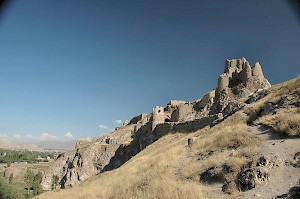
The first reference to the Urartian city of Tušpa is the inscriptions on the Balawat Gate from the Assyrian capital Kalhu (modern Nimrud), now in the British Museum, which tells that king Šalmaneser III (r. 859-824) "descended to the sea of Urartunote and washed his terrible weapons in its waters". He had defeated king Sarduri I, who had just united Urartu.
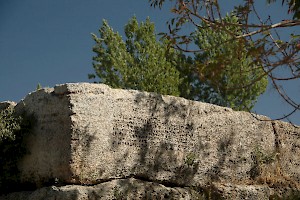
An inscription, in Assyrian cuneiform, on a small fortification west of the citadel of Tušpa, mentions him as builder of a wall, and it is likely that he is in fact the founder of the town.
This is the inscription of king Sarduri, son of the great king Lutipri, the powerful king who does not fear to fight, the amazing shepherd, the king who ruled the rebels. I am Sarduri, son of Lutipri, the king of kings and the king who received the tribute of all the kings. Sarduri, son of Lutipri, says: I brought these stone blocks from the city of Alniunu. I built this wall.
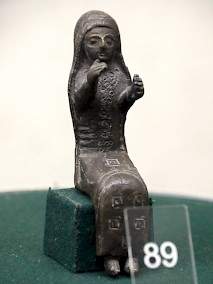
His successors expanded the kingdom. King Minua (r. c.810-c.785) ordered the construction of large irrigation works near Tušpa, including a canal with a length of no less than fifty kilometers. (The land of another Urartian citadel, Çavustepe, is still irrigated with ancient canals; the land north and south ofTušpa must have resembled the land now surrounding Çavustepe.) The land was famously fertile, but in the end, Urartu was held in check by another Assyrian ruler, Tiglath-Pileser III, who repeated Šalmaneser's success against the Urartian capital in 742. King Sarduri II, whose tomb is in the citadel of Tušpa, was defeated.
In 714, the Assyrians were even more successful: Sargon marched almost unopposed through Urartu. Nevertheless, the kingdom survived, although it suffered heavily from new invasions by the Cimmerians, the Scythians, and probably the Medes as well. It is hard to reconstruct the events, but in the end, the area was part of the satrapy of Armenia in the Achaemenid Empire. The site was soon eclipsed by Erebuni (modern Yerevan).
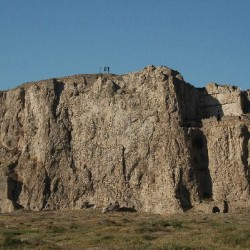 Van, Citadel, royal tombs: view from the south |
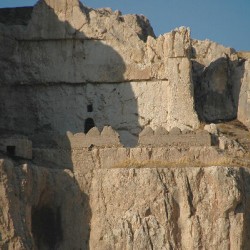 Van, Citadel, royal tombs: view from the south |
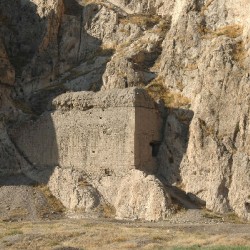 Van, Citadel, one of the royal tombs |
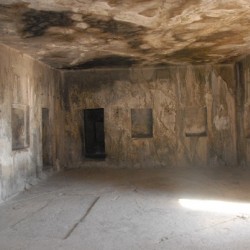 Van, Citadel, inside one of the royal tombs |
In the Achaemenid period, the citadel lay abandoned, although the name "Tušpa" was not forgotten: it lived on in the name of the lake, Thospitis. The people now lived south of the old citadel, in a town that was to have mixed fortunes until it was destroyed during the First World War. Only the mosque survives.
 Van, Citadel, Detail |
 Van, Citadel, seen from the north |
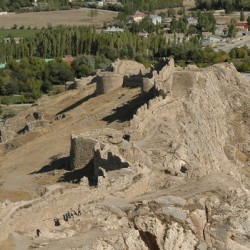 Van, Citadel, Eastern part |
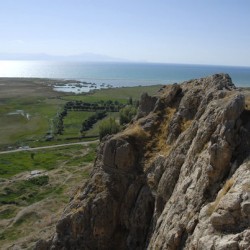 Van, Citadel, View to the west |
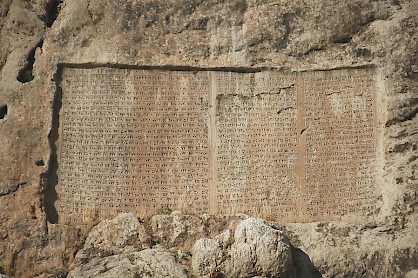
King Xerxes (r.486-465) left an inscription, known as XV, on the south face of the citadel. It is almost funny, because it states that Xerxes' father Darius had prepared the place for an inscription but had never inscribed it, and that therefore - Xerxes tells you - there had not been any inscription. And by recording that there was no inscription, from now on, there was something to be read.
Tušpa - or Van Kalesi, to use its modern name - is a remarkable and impressive site; it is about two kilometers long, more or less east-west, and just a hundred meters wide. There are several royal tombs, often reused as storage rooms under the Ottomans, who also built the walls that catch the attention today.
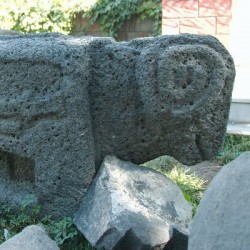 Statue of ram (Urartian?) |
 Armenian tombstone with an Urartian inscription |
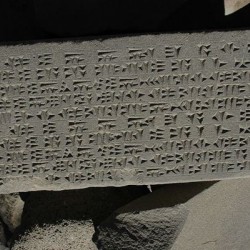 Urartian inscription |
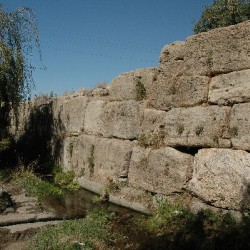 Van, Citadel, Jetty of Sarduri |